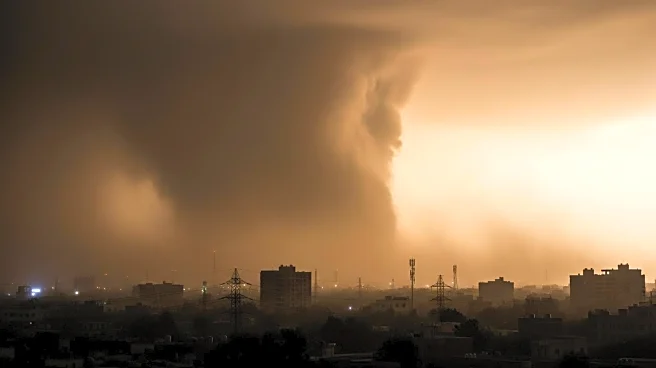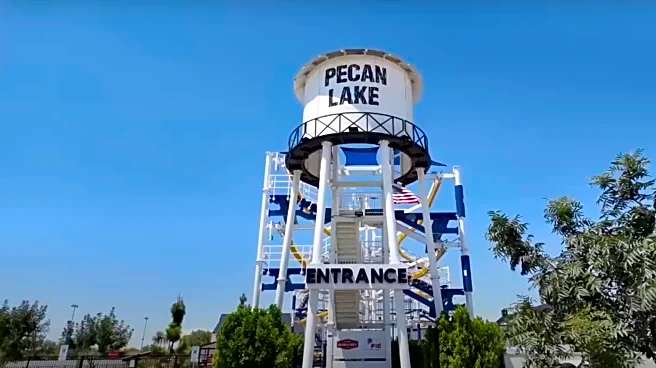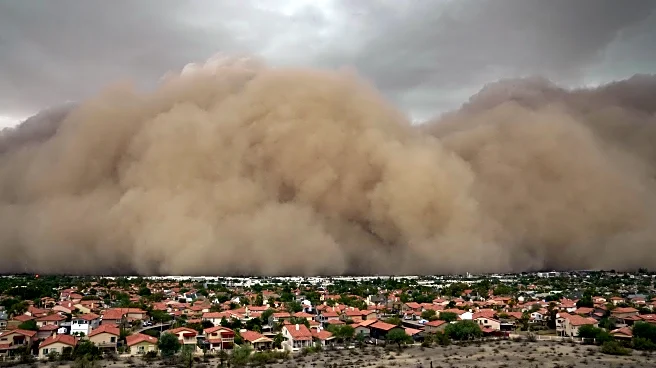What is the story about?
What's Happening?
A significant dust storm, known as a haboob, swept through the Phoenix area, causing widespread disruption. The storm, characterized by a massive wall of dust, affected both ground and air travel, leading to flight cancellations and delays at the city's international airport. Thousands of residents experienced power outages as the storm moved through the region. The National Weather Service describes a haboob as a dust storm resulting from outflowing winds from an incoming thunderstorm, which can significantly reduce visibility and increase wind speeds. The storm's impact was felt across the metro area, highlighting the challenges posed by such natural events.
Why It's Important?
Haboobs are a common occurrence in arid regions like Arizona, but their impact on daily life can be substantial. The disruption to travel and power supply underscores the need for preparedness and effective response strategies to mitigate the effects of such storms. The event serves as a reminder of the vulnerabilities faced by communities in desert areas, where dust storms can occur with little warning. Understanding the causes and characteristics of haboobs is crucial for developing safety protocols and ensuring public awareness. The storm's impact may also prompt discussions on infrastructure resilience and emergency management in affected regions.
What's Next?
As the dust storm subsides, efforts will focus on restoring power and resuming normal operations at the airport and other affected areas. Authorities may review and update safety guidelines for residents and travelers to better prepare for future dust storms. The event could lead to increased investment in infrastructure improvements to enhance resilience against natural disasters. Additionally, meteorologists and researchers may study the storm's patterns to improve forecasting and early warning systems. Community outreach and education initiatives may be implemented to raise awareness about the risks associated with haboobs and promote safety measures.
AI Generated Content
Do you find this article useful?
















